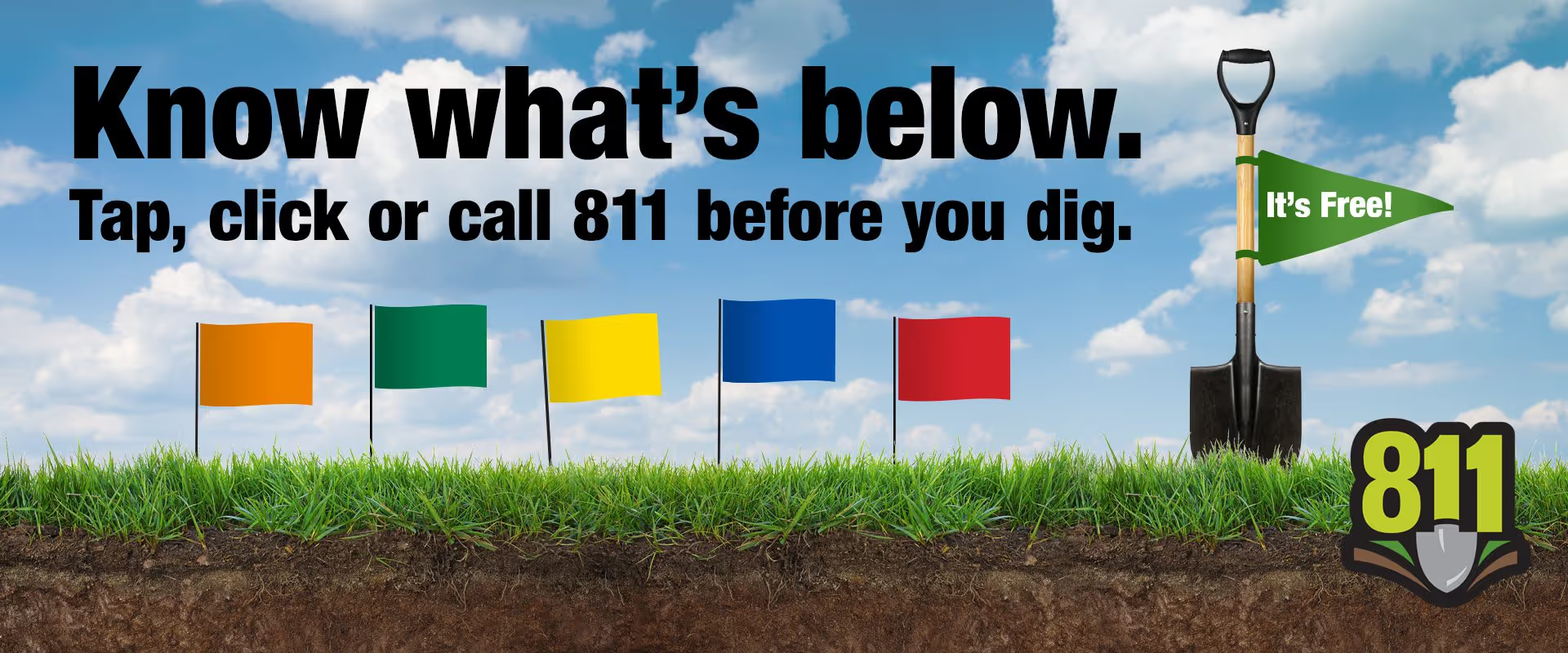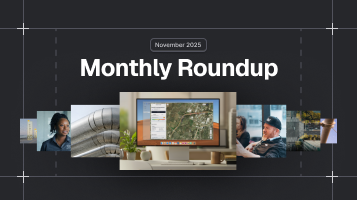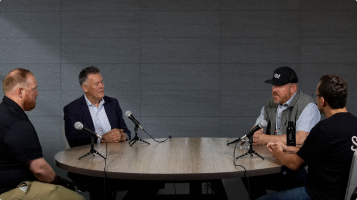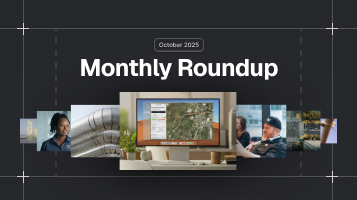Why One-Call/811 Won't Find All Utilities
Written by

Published on
August 24, 2022


Table of contents
Before you start a project that involves excavation or breaking ground—whether you’re a homeowner, contractor, landscaper, or even a large municipality—there is something you have to take into account:
There are utilities buried below the ground surface that can cause conflicts, hamper progress, wreak financial havoc on your budget, and even cause physical (and, in the worst case, mortal) harm.
Especially if you don’t know where they are.
Depending on your industry, your job role, and your experience, you may be very familiar with this issue, or it may be something you’ve never considered before. Whatever the case, it’s a known challenge for the infrastructure and construction sector, and the problem has only gotten worse over time—as the subsurface becomes more and more crowded with cables and pipelines, and as construction delays, legal penalties, and lawsuits involve higher and higher sums of money.
Whether it’s about…
establishing professional standards for the subsurface utility engineering profession
passing legislation to require due diligence from contractors and engineers on design plans and as-builts
setting up public services like One-Call or 811 to mark underground lines on construction sites before excavation
or developing new commercial solutions like 4Map, which provides utility mapping based on collected records, remote sensing, and AI
…many different organizations, companies, and public authorities are trying to improve the process and safety standards of designing and building around utilities—all based on tough lessons learned from costly, avoidable, and tragic circumstances of destruction and harm. And that’s to say nothing of the countless working days lost, the miles of infrastructure damaged or taken out of service, or the billions of dollars wasted or diverted from investing in the economy and a better future.
One outcome from these lessons learned was the development of the One-Call/811 or “Call Before You Dig” system, which was designed to coordinate between utility companies and excavators through a centralized intermediary managing records and locating services.
After all those lessons learned and years of construction challenges, you would think that calling 811 does just that—match your site boundary to records for all of the utilities present around your site, as well as to a trained professional who will locate and mark all of the subsurface features on your site to ensure safe digging.
But is that what’s really happening? Let’s break it down.

What is One-Call/811?
In every state in the U.S., utility companies are obligated by law to participate in the One-Call system, and citizens or residents are obligated to call before they dig. In that sense, the U.S. is actually ahead of countries like Canada, where membership in One-Call is mandatory for utility companies in only one province.
However, things are not quite that simple in the U.S. Unfortunately, since the passing of the One-Call requirement, a patchwork of additional legislation has been passed in different states, offering exclusions and regulatory exemptions to certain sectors and thus making the system more convoluted and sometimes difficult to navigate the process towards damage prevention.
Nevertheless, One-Call/811 is still a great tool and a legal obligation for citizens and companies to call before they dig. Even if there are exemptions, the majority of utility companies are eager and proactive participants that are making the effort to benefit users with utility marking services to prevent damages, fulfilling the mission of the Common Ground Alliance.
One-Call/811 is a relay station, not a centralized utility locating service
The 811 call center is exactly that—a call center. It is not a utility company, a utility locating service, or a broader operational entity. It is basically the bridge between the person requesting locates and the member utilities that are required to participate, barring any exclusions and exceptions. But the locating services are performed by technicians from a Locate Service Provider or employees/contracted workers of a specific utility company. They are not employed directly by the One-Call center, which handles the procurement of services and the communication between parties, but not the services themselves.
The One-Call/811 dilemma: A patchwork of exemptions
When you use One-Call, you might assume that after submitting your request, all companies in the relevant area are notified and will respond to your request at the precise ticket site. Unfortunately, this isn’t necessarily an accurate description of what happens. Why not?
To answer that, it’s necessary to investigate the specific details of your local 811 system. Things like secure facilities, federally regulated jurisdictions, national park land administered by the Bureau of Land Management, and even state transportation agencies or DOTs may have exemptions from participating in 811.
Let’s look at the specific exemptions listed in the Texas Utilities Code (Sec. 251.003), with added emphasis:
- an aboveground or underground storage tank, sump, or impoundment or piping connected to an aboveground or underground storage tank, sump, or impoundment located in the same tract of land as the storage tank, sump, or impoundment
- an underground facility operated by the owner of a secured facility and located entirely within the secured facility
- an underground facility that serves only the owner of the underground facility or the owner's tenant and that is located solely on the owner's property
- piping within a well bore
- the portion of an exploration and production underground facility that is located within the boundaries of the oil or gas field from which the oil and gas is produced and that is not located in the boundaries of an established easement or right-of-way granted for the benefit of a governmental entity or a private entity if the easement or right-of-way is granted for a public purpose
- an underground facility that serves a cemetery and is located solely on the cemetery's property
Prior to excavation, it is extremely important to consider whether any such structures could be present in the construction area if relying solely on 811 to mark subsurface infrastructure on your site. In fact, many utilities that are legally entitled to exemptions still participate voluntarily in the One-Call system. However, this cannot be guaranteed, so demands further investigation on the part of the project owner, engineering or construction team.

Damage prevention requires more than one tool
When it comes to safe excavation, knowing your surroundings is paramount. This applies not only to seasoned excavators but also to unsuspecting homeowners who may not be aware of the risks involved. The potential for liability and harm is clear from CGA’s DIRT (Damage Information Reporting Tool) Report, which lists non-notification as a core factor for accidental strikes on utilities.
Awareness and ease of use and availability of information on the entire gamut of utilities are the keys to damage prevention. Another tool is the design ticket based on Colorado’s 811 law, where prior to excavation a SUE investigation must take place on any public project that meets the threshold criteria set by the legislation. Additional tools from the commercial technology sector include products like 4Map, which makes an easy-to-use amalgamated utility database available to a wide range of users: a tool that should be the first step in any project involving utilities.
One-Call is an amazing resource, but it cannot always be relied on to be “all-inclusive.” And unfortunately, it should be all-inclusive to live up to its namesake. So it is an important achievement in the recent history of damage prevention, but we still have work to do to truly solve the problem of subsurface utilities for good.
Recent blog posts

Our Newsletter
Join 7k infrastructure professionals
Get monthly insights on ways to build smarter, faster and safer with Utility AI.



.avif)

